Willem de Kooning and Italy

Willem de Kooning, Untitled #12, 1969. Bronzo 19.1x23.5x14.6 cm. Raymond and Patsy NasherCollection, NasherSculpture Center, Dallas © 2023 The Willem de Kooning Foundation, SIAE
From 16 April 2024 to 15 September 2024
Venice
Place: Gallerie dell’Accademia
Address: Calle della Carità 1050
Times: MONDAYS FROM 8.15 A.M. TO 2 P.M. FROM TUESDAY TO SUNDAY FROM 8.15 A.M. TO 7.15 P.M.
Responsibles: Gary Garrels e Mario Codognato
Official site: http://www.gallerieaccademia.it
This exhibition will trace the impact of Willem de Kooning’s two extended visits to Italy, one in 1959 and one in 1969, on the works that followed each and on the trajectory of his œuvre. The lasting effect of these two creative periods will be revealed in an exemplary selection of works, ranging from the late 1950s through to the 1980s, from important private and museum collections both in Europe and the United States.
The exhibition opens with works from the late 1950s, made in the years leading up to de Kooning’s first visit to Italy. The “Abstract Parkway” paintings of this period reveal the strength and vigour of his work at mid-century, when he became one of the most influential and imitated painters in America. In 1959, de Kooning returned to Europe for the first time since leaving Holland in 1926. He arrived at a high point of critical and commercial success; his solo show at the Sidney Janis Gallery in the spring had sold out on the day it opened. De Kooning, however, was wary of the success he was enjoying, telling Time magazine “I’m selling my own image now.” In Rome, away from his familiar world, de Kooning took the opportunity to start anew. He spent four months in Italy and produced a significant body of black and white works on paper characterised by experimental methods: painting on the floor, mixing enamel paint with pumice, tearing and collaging the paper. The exhibition will present key works from this series that reveal the fascinating variety of de Kooning’s methods in Rome. While in Italy, he synthesised from all around him, experiencing both classical Italian art as well as the work of his Italian contemporaries, many of whom became friends. Just as de Kooning’s New York environment worked its way into his paintings and drawings, it appears that the same occurred while in Rome – a gestalt of “glimpses”.
Upon returning to New York, de Kooning worked on large abstract paintings in which a new luminosity and more open structure began to appear. Three of the most important works from 1960 – each in a leading public collection – will be brought together for the first time in this exhibition: Door to the River, A Tree in Naples, and Villa Borghese. The gallery will also include a selection of the large figurative paintings made in the mid-1960s. Two key paintings – Red Man with Moustache and Man Accabonac – will be reunited as a diptych, echoing the manner in which they were first displayed at the Baltimore Museum of Art in 1972. These paintings will be presented with the sculpture from 1969 and the early 1970s, clearly establishing the close relationships between the painting and sculpture at this time.
Back in Rome in 1969, de Kooning ran into an old friend from New York, the sculptor Herzl Emanuel. This chance encounter led to de Kooning working for the first time with clay and producing thirteen small sculptures cast in bronze editions. Squeezed, modelled and reduced to the most fundamental of shapes through the immediacy of his touch, these works led de Kooning to disencumber himself from the figure as used in the 1960s. This experience launched his production of a substantial body of sculpture after his return home, notably imbued with empathy and a deep emotional expressiveness, transcending sheer materiality, and with it, a new direction of experimentation that brought with it the grand abstractions that would occupy him from the mid-1970s through to the end of the decade. The exhibition will present de Kooning’s sculpture amid surrounding walls of figurative paintings made at the same time as he was wrestling with his bodies in clay along with blissfully rendered abstractions from 1975 to 1977.
The exhibition will invite the audience to consider the synthesis achieved in the late 1970s against de Kooning’s analysis and breaking down of forms across drawing, painting, and sculpture from earlier in the decade.
The exhibition will also place painting and sculpture in dialogue with drawings from the 1960s and 1970s. A highlight of the drawing selection will be four in ink that de Kooning made while in Spoleto in 1969. A complementary selection of intimate gestural drawings that are conceptually related to the sculptures will be presented alongside the Spoleto group. A second gallery will offer a wider range of drawings from those years in which de Kooning fragmented the figure, often leaving empty spaces balanced against his vigorous lines.
The last large gallery will present a selection of de Kooning’s late paintings from the 1980s, from 1981 to 1987, in which the language of three-dimensional form is again transfigured into a new, abstract poetry. These paintings contain only the faintest vestiges of figurative references and are characterized by subtly tinted whites balanced by brilliant bands and areas of color. They are among de Kooning’s most beautiful and sublime works, in which a sense of Baroque composition resides. In an interview from 1969, de Kooning said the following regarding his experience of art in Italy: “I remember everything half-suspended or projected into space; the paintings look right from whatever angle you choose to look at them. The whole secret is to free yourself from gravity.” The comment is almost prophetic of the effect of his 1980s paintings along with his other explorations that came after his first visit to Italy.
Willem de Kooning and Italy is part of the Gallerie dell’Accademia’s exhibition series of the great protagonists of modern and contemporary art. The exhibition has been designed in collaboration with the UNA/FWR Associati studio directed by architect Giulia Foscari. It will be the first major exhibition of de Kooning’s work in Italy since 2006 and the largest presentation of his art ever organised in the country.
A comprehensive catalogue will be published both in English and Italian, with all works in the exhibition illustrated. The exhibition’s curators, Mario Codognato and Gary Garrels, will each offer essays as anchors for the publication. Theirs will be complimented by focused texts by Jeremy Bleeke, Ester Coen, Anna Coliva and Patrick Elliot, as well as documentation to further illuminate this rich, new consideration of the artist’s work. The Venetian publishing house Marsilio Editori will act as publisher. D.A.P. will handle worldwide distribution.
Willem de Kooning (1904, Rotterdam, the Netherlands - 1997, New York, USA) was apprenticed to a leading design firm when he was twelve and received his formal art education at night from the Rotterdam Academy of Fine Arts and Techniques (later renamed the Willem de Kooning Academy), from 1917 through 1921. In 1926, he stowed away on a ship to the United States where he ultimately flourished as one of the great artists of the twentieth century, a respected artist’s artist influencing his own and future generations of artists to come. His career spanned 6 decades.
Critical acclaim arrived in 1948 with a one-person exhibition of non-representational, densely worked, oil and enamel paintings, including his now revered black-and-white paintings. Shortly thereafter, in 1950, de Kooning completed Excavation, a related grand-scaled abstraction. Arguably one of the most important paintings of the twentieth century,Excavation was chosen as one of the works to represent the United States at the XXV Venice Biennale, June 3 – October 15, 1950. This would be de Kooning’s first of six Biennales (1950, 1954, 1956, 1978, 1986 and 1988).
A maverick painter, who rejected the accepted stylistic norms by dissolving the relationship between foreground and background and by using paint to create emotive, abstract gestures, de Kooning, with his peers of the late forties and early fifties, was variously labelled as an “Action Painter,” “Abstract Expressionist” or simply of the “New York School.” De Kooning was one of the handful of non-conforming artists responsible for the historic shift of the center of avant-garde art from Paris to New York in the years following World War II.
In 1953, he shocked the art world and gained unintended notoriety by exhibiting a now infamous series of aggressively painted figural works, commonly known as the “Women” paintings. His return to figuration was perceived by some as stylistically reactionary and a betrayal of Abstract Expressionist principles. However, The Museum of Modern Art, New York, accepted de Kooning’s change in style as an advancement in his work and purchased Woman I (1950 – 1952) in 1953. De Kooning was now synonymous with the avant-garde.
Fighting adherence to any orthodoxy, de Kooning continued to explore new styles and methods, often challenging his own facility. Throughout his career he moved between figuration and landscape, building his lexicon from the cacophony of visual excitement, light and movement in daily life and his own work. Various moves and travel led to further experimentation and new directions in his oeuvre, pushing through from painting and drawing to sculpture and lithography. He is influential as much for his subject matter and pictorial space as his unconventional and striking ways of handling his mediums. De Kooning provided the younger generations of artists with a risk-taking model for living, art as a way of living.
De Kooning became an American citizen in 1962. He was awarded many honours in his lifetime, including The Presidential Medal of Freedom in 1964, USA. His artwork has been included in thousands of exhibitions and is in the permanent collections of many of the world’s eminent art institutions, including the Peggy Guggenheim Collection, Venice; the Stedelijk Museum, Amsterdam; Tate Modern, London; The Museum of Modern Art, New York; Solomon R. Guggenheim Museum, New York; The Metropolitan Museum of Art, New York; the Art Institute of Chicago; the Smithsonian Institution’s Hirshhorn Museum & Sculpture Garden, Washington D.C.; the National Gallery of Art, Washington, D.C. and the National Gallery of Australia, Canberra. Major publications have been authored by Gabriella Drudi, John Elderfield, Gary Garrels, Thomas Hess, Harold Rosenberg, Richard Shiff, and Judith Zilzcer.
The exhibition opens with works from the late 1950s, made in the years leading up to de Kooning’s first visit to Italy. The “Abstract Parkway” paintings of this period reveal the strength and vigour of his work at mid-century, when he became one of the most influential and imitated painters in America. In 1959, de Kooning returned to Europe for the first time since leaving Holland in 1926. He arrived at a high point of critical and commercial success; his solo show at the Sidney Janis Gallery in the spring had sold out on the day it opened. De Kooning, however, was wary of the success he was enjoying, telling Time magazine “I’m selling my own image now.” In Rome, away from his familiar world, de Kooning took the opportunity to start anew. He spent four months in Italy and produced a significant body of black and white works on paper characterised by experimental methods: painting on the floor, mixing enamel paint with pumice, tearing and collaging the paper. The exhibition will present key works from this series that reveal the fascinating variety of de Kooning’s methods in Rome. While in Italy, he synthesised from all around him, experiencing both classical Italian art as well as the work of his Italian contemporaries, many of whom became friends. Just as de Kooning’s New York environment worked its way into his paintings and drawings, it appears that the same occurred while in Rome – a gestalt of “glimpses”.
Upon returning to New York, de Kooning worked on large abstract paintings in which a new luminosity and more open structure began to appear. Three of the most important works from 1960 – each in a leading public collection – will be brought together for the first time in this exhibition: Door to the River, A Tree in Naples, and Villa Borghese. The gallery will also include a selection of the large figurative paintings made in the mid-1960s. Two key paintings – Red Man with Moustache and Man Accabonac – will be reunited as a diptych, echoing the manner in which they were first displayed at the Baltimore Museum of Art in 1972. These paintings will be presented with the sculpture from 1969 and the early 1970s, clearly establishing the close relationships between the painting and sculpture at this time.
Back in Rome in 1969, de Kooning ran into an old friend from New York, the sculptor Herzl Emanuel. This chance encounter led to de Kooning working for the first time with clay and producing thirteen small sculptures cast in bronze editions. Squeezed, modelled and reduced to the most fundamental of shapes through the immediacy of his touch, these works led de Kooning to disencumber himself from the figure as used in the 1960s. This experience launched his production of a substantial body of sculpture after his return home, notably imbued with empathy and a deep emotional expressiveness, transcending sheer materiality, and with it, a new direction of experimentation that brought with it the grand abstractions that would occupy him from the mid-1970s through to the end of the decade. The exhibition will present de Kooning’s sculpture amid surrounding walls of figurative paintings made at the same time as he was wrestling with his bodies in clay along with blissfully rendered abstractions from 1975 to 1977.
The exhibition will invite the audience to consider the synthesis achieved in the late 1970s against de Kooning’s analysis and breaking down of forms across drawing, painting, and sculpture from earlier in the decade.
The exhibition will also place painting and sculpture in dialogue with drawings from the 1960s and 1970s. A highlight of the drawing selection will be four in ink that de Kooning made while in Spoleto in 1969. A complementary selection of intimate gestural drawings that are conceptually related to the sculptures will be presented alongside the Spoleto group. A second gallery will offer a wider range of drawings from those years in which de Kooning fragmented the figure, often leaving empty spaces balanced against his vigorous lines.
The last large gallery will present a selection of de Kooning’s late paintings from the 1980s, from 1981 to 1987, in which the language of three-dimensional form is again transfigured into a new, abstract poetry. These paintings contain only the faintest vestiges of figurative references and are characterized by subtly tinted whites balanced by brilliant bands and areas of color. They are among de Kooning’s most beautiful and sublime works, in which a sense of Baroque composition resides. In an interview from 1969, de Kooning said the following regarding his experience of art in Italy: “I remember everything half-suspended or projected into space; the paintings look right from whatever angle you choose to look at them. The whole secret is to free yourself from gravity.” The comment is almost prophetic of the effect of his 1980s paintings along with his other explorations that came after his first visit to Italy.
Willem de Kooning and Italy is part of the Gallerie dell’Accademia’s exhibition series of the great protagonists of modern and contemporary art. The exhibition has been designed in collaboration with the UNA/FWR Associati studio directed by architect Giulia Foscari. It will be the first major exhibition of de Kooning’s work in Italy since 2006 and the largest presentation of his art ever organised in the country.
A comprehensive catalogue will be published both in English and Italian, with all works in the exhibition illustrated. The exhibition’s curators, Mario Codognato and Gary Garrels, will each offer essays as anchors for the publication. Theirs will be complimented by focused texts by Jeremy Bleeke, Ester Coen, Anna Coliva and Patrick Elliot, as well as documentation to further illuminate this rich, new consideration of the artist’s work. The Venetian publishing house Marsilio Editori will act as publisher. D.A.P. will handle worldwide distribution.
Willem de Kooning (1904, Rotterdam, the Netherlands - 1997, New York, USA) was apprenticed to a leading design firm when he was twelve and received his formal art education at night from the Rotterdam Academy of Fine Arts and Techniques (later renamed the Willem de Kooning Academy), from 1917 through 1921. In 1926, he stowed away on a ship to the United States where he ultimately flourished as one of the great artists of the twentieth century, a respected artist’s artist influencing his own and future generations of artists to come. His career spanned 6 decades.
Critical acclaim arrived in 1948 with a one-person exhibition of non-representational, densely worked, oil and enamel paintings, including his now revered black-and-white paintings. Shortly thereafter, in 1950, de Kooning completed Excavation, a related grand-scaled abstraction. Arguably one of the most important paintings of the twentieth century,Excavation was chosen as one of the works to represent the United States at the XXV Venice Biennale, June 3 – October 15, 1950. This would be de Kooning’s first of six Biennales (1950, 1954, 1956, 1978, 1986 and 1988).
A maverick painter, who rejected the accepted stylistic norms by dissolving the relationship between foreground and background and by using paint to create emotive, abstract gestures, de Kooning, with his peers of the late forties and early fifties, was variously labelled as an “Action Painter,” “Abstract Expressionist” or simply of the “New York School.” De Kooning was one of the handful of non-conforming artists responsible for the historic shift of the center of avant-garde art from Paris to New York in the years following World War II.
In 1953, he shocked the art world and gained unintended notoriety by exhibiting a now infamous series of aggressively painted figural works, commonly known as the “Women” paintings. His return to figuration was perceived by some as stylistically reactionary and a betrayal of Abstract Expressionist principles. However, The Museum of Modern Art, New York, accepted de Kooning’s change in style as an advancement in his work and purchased Woman I (1950 – 1952) in 1953. De Kooning was now synonymous with the avant-garde.
Fighting adherence to any orthodoxy, de Kooning continued to explore new styles and methods, often challenging his own facility. Throughout his career he moved between figuration and landscape, building his lexicon from the cacophony of visual excitement, light and movement in daily life and his own work. Various moves and travel led to further experimentation and new directions in his oeuvre, pushing through from painting and drawing to sculpture and lithography. He is influential as much for his subject matter and pictorial space as his unconventional and striking ways of handling his mediums. De Kooning provided the younger generations of artists with a risk-taking model for living, art as a way of living.
De Kooning became an American citizen in 1962. He was awarded many honours in his lifetime, including The Presidential Medal of Freedom in 1964, USA. His artwork has been included in thousands of exhibitions and is in the permanent collections of many of the world’s eminent art institutions, including the Peggy Guggenheim Collection, Venice; the Stedelijk Museum, Amsterdam; Tate Modern, London; The Museum of Modern Art, New York; Solomon R. Guggenheim Museum, New York; The Metropolitan Museum of Art, New York; the Art Institute of Chicago; the Smithsonian Institution’s Hirshhorn Museum & Sculpture Garden, Washington D.C.; the National Gallery of Art, Washington, D.C. and the National Gallery of Australia, Canberra. Major publications have been authored by Gabriella Drudi, John Elderfield, Gary Garrels, Thomas Hess, Harold Rosenberg, Richard Shiff, and Judith Zilzcer.
SCARICA IL COMUNICATO IN PDF
COMMENTI

-
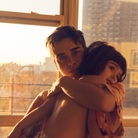 Dal 17 July 2025 al 2 November 2025
Cortona | Sedi varie
Dal 17 July 2025 al 2 November 2025
Cortona | Sedi varie
-
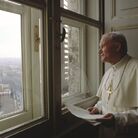 Dal 17 July 2025 al 30 November 2025
Roma | Museo Nazionale di Castel Sant’Angelo
Dal 17 July 2025 al 30 November 2025
Roma | Museo Nazionale di Castel Sant’Angelo
-
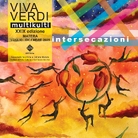 Dal 15 July 2025 al 19 December 2025
Matera | Sedi varie
Dal 15 July 2025 al 19 December 2025
Matera | Sedi varie
-
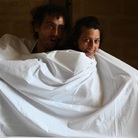 Dal 15 July 2025 al 21 July 2025
Matera | Fondazione Le Monacelle
Dal 15 July 2025 al 21 July 2025
Matera | Fondazione Le Monacelle
-
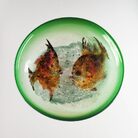 Dal 12 July 2025 al 24 November 2025
Venezia | Museo del Vetro
Dal 12 July 2025 al 24 November 2025
Venezia | Museo del Vetro
-
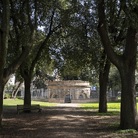 Dal 11 July 2025 al 21 September 2025
Roma | Loggia dei Vini - Villa Borghese
Dal 11 July 2025 al 21 September 2025
Roma | Loggia dei Vini - Villa Borghese


